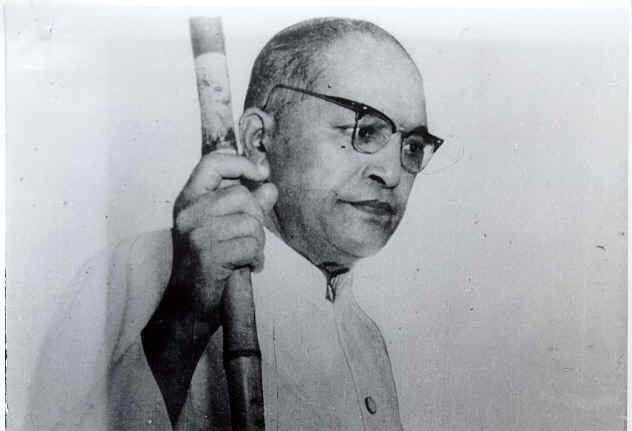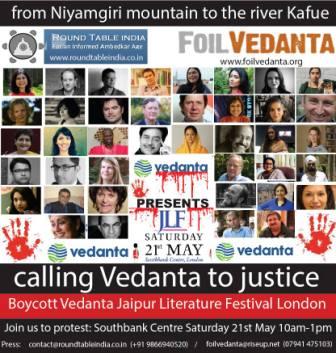Narayan Bhosale
(Translated by Nidhin Shobhana & Vinayak Lashkar)
The following essay is an English translation of a few significant excerpts from Narayan Bhosale’s Marathi introduction to Vinayak Lashkar‘s book ‘Wadar Samaj: Samajshastriya Abhyas‘ (Wadar Samaj: A Sociological Study). The introduction reviews the significance of Vinayak’s book in the light of historical, political and sociological realities of Denotified and Notified tribes in general and Wadars in particular.
This book is an empirical study of Wadar community in Maharashtra. Wadars form an extremely marginalized and exploited group. Being a Wadar himself, the author, Vinayak Lashkar, exemplifies an innate sense of accountability and responsibility in this study. Therefore, this study is an insightful, ‘objective’ and valuable addition to the available literature on denotified and nomadic tribes. It exposes the contradictions and unequal social realities which exist in our understanding of denotified and nomadic tribes. Being an M.Phil thesis, the author had the space and opportunity to be academically rigorous.
The book lucidly articulates the reasons for selecting the research topic, its scope, rationale, nature, methodology, literature review and its inter-disciplinary relevance. The author disentangles discourses on the ethnicity, traditional occupation, marriage and kinship practices (roti-beti vyavahaar), place and geographies (Vastis) and caste panchayats (Jat Panchayat) of Wadar community. The mainstream sociological discourse believes that caste manifests its cruelty primarily in rural areas as compared to urban areas. However, the story of Wadars in the context of graded caste inequality exposes its fallacy.
The ‘so-called’ self-reliant village is a contested site of feudal and casteist exploitation. Groups who experienced this exploitation migrated from small villages to big villages (cities) in the hope of freedom. However, structures of exploitation persisted in cities. Like other denotified and nomadic tribes, Wadars also migrated to cities and built these cities. In fact, toiling Wadar Vastis became ‘hubs of labour’ for cities. These urban ‘outcastes’ thrived on the outskirts of cities in the most disparaging material circumstances. They fulfilled the labour needs of urbanization. Eventually, caste persisted in cities, in new forms and shapes, under the banner of neo-liberalism.
Groups which travel long distances in search of food, shelter, water and healthcare are broadly classified as nomadic tribes. Such macro-classifications can be illustrated through studies at a micro-level. Though there may be several similarities between nomadic tribes, there is great value in understanding their differences and diversities. The author tries to understand these differences by anchoring his enquiry on Wadar community.
In India, there are more than a thousand DNT communities. They comprise nearly fifteen percent of the Indian population (more than 150 million). Every community nurtures difference in their life practices. Similarly, their history, religion, culture and resistance are different too. However, one will find only a handful of studies on these communities. Even these works hardly show any academic rigor. Studies conducted by NGOs, activists and independent scholars are few and far-fetched. In the creative sphere of written literary tradition especially fiction, autobiography, poetry etc., DNT communities are still to mark their vibrant presence. Laxman Gaikwad’s Uchalya (titled ‘Branded’ in English translation), Kishor Shantabai Kale’s Kolhatyache Por (titled ‘Against All Odds’ in English translation), Vimaltai More’s Teen Dagdachi Chul (Three-stoned hearth), Laxman Mane’s Upara (Parasite) are few exceptions in the autobiography genre. The reason for this disparity lies in their limited access to higher education and the exclusivity of dominant public sphere. They have largely remained academic and literary untouchables.
After the formation of Maharashtra, it took thirty five years for the state government to appoint a commission on DNT communities. The commission was appointed by BJP-Sena coalition government in 1995. The commission submitted its report in 1999. At an all India level, a comprehensive study on DNT communities was commissioned in 2005 under the leadership of Dr. Renke. Ganesh Devi and his team formed a technical advisory committee under the banner of NGOs to survey the socio-economic condition of DNT communities. However, the state has largely turned a blind eye to these efforts.
Maharashtra has nearly thirty five important DNT tribe-castes and more than two hundred sub-tribe castes. These castes are primarily found in Hindu, Sikh and Muslim religions. After 2006, a substantial number have converted to Buddhism1. Kari, Beldaar, Sapgarudi, Shikkalgar, Madari, Darveshi, Vadyawale are largely Muslims. They are engaged in different occupations based on their situational, regional, religious and other peculiarities. Occupations included beggary, wrestling, entertainment, astrology, daily wage labour, snake charming and many other odd jobs. The first study on these communities was carried out by officers appointed by the colonial administration. The study aimed at identifying and enlisting ‘criminal’ tribe-castes. The Criminal Tribes Act of 1871 was an outcome of colonial research. Wadar community was branded criminal under this act. On 23rd June, 1939 in Solapur, Belgaum, Bijapur, Dharwad, Deccan, South Maratha, Mysore and Madras Presidency notified and declared Wadars as criminals.
On 20th April 1936, Wadars were restricted to their districts (zilabandi) in colonial and non-colonial territories. The impact of these colonial policies is felt even today. Ideally, the state should have cleared the obstacles created by the colonizers. One is forced to ask whether the colonists studied these communities to liberate them or chain them further. The studies conducted by the colonial state negatively codified these communities as criminals, nomads and parasites. Nowadays, the ‘nomadic way of life’ of Nomadic tribes is also called ‘migration’. Indian and European elite have been historically migrating for trade, ideology, economic imperialism and military operations. On the contrary, women, Shudras and ‘have-nots’ have been migrating due to marriage, famines, droughts, floods, epidemics, external attacks, riots, cultural revolts and resistance. Alongside, there have been migrations in search of social mobility, opportunities, education, research and occupation. Historically, many tribes have been migrating in search of food and shelter. However, they are an exception. Denotified and nomadic tribes are a part of this exception. They have been migrating in search of their livelihood. They find it difficult to settle down in a particular area. Therefore, the author’s study on the Wadar community is important.
Vinayak Lashkar, author of ‘Wadar Samaj: Samajshastriya Abhyas‘ (Wadar Samaj: A Sociological Study)
In India, every caste and tribe has stories and myths about its origin. To find our contemporary social reality in these distorted and multiple myths is like finding a black cat in darkness! Myths are contextual in terms of time and place. They are popularized through oral cultural productions, crossing boundaries, in many ways distorting the reality. These stories have a positive impact on the ruling castes while it has a negative impact on the laboring castes.
The Kshatriya claims of Wadar community and their attempts to assimilate with laboring, exploited castes are contradictory processes.
Sitawati’s myth2 which justifies Wadar women not covering their upper body, Jasma’s story and slogans such as ‘Jai Bajrang, Jai Wadar’ keep us busy in narrow questions of identity and pride. This often blinds us to the strategies and operations of the ruling castes and classes. There is a need to understand the limitations of identity oriented research and politics. Though myths and stories are important to reconstruct the histories of laboring castes, it is not enough to bring social revolution. The author has not based his study on myths. Constructing roads, dams, buildings, mining, sculpting, creating different stone utensils, building architectural wonders constitute the laboring past and present of Wadars. In urban areas, Wadars have continued their traditional occupations in new forms. Contemporary diversification in their occupations does not give us any evidence in rapid upward mobility. Thus, the Kshatriya claim is not tangible.
Apart from Brahmins, every other caste in India claims Kshatriya status. Interestingly, this ‘97%’ which claims Kshatriyahood in a way or the other do not seem to come together even in terms of this dubious claim. The word Kshatriya literally means ‘The protector of the land (Kshetra)’. However, present day claims endorse the ‘militant Kshatriya image’ by supporting caste and its violence. With this, they automatically uphold the Brahmanical caste hierarchy. Such contradictions create negative heroes out of Dalits and Bahujans. Would such attempts emancipate us?
The need of the hour is to build unity between laboring castes and classes. Vinayak Lashkar, through his work upholds this need. His book is an important addition in such a direction.
Notes
[1]. In 2006, Laxman Mane, a prominent literary figure in the community, converted to Buddhism. Many like-minded people in the community followed suit.
[2]. The myth goes something like this – ‘One day Sita was bathing near a pond behind a huge rock. A Wadar man accidently breaks the rock near the pond and finds Sita naked. Sita, in her fit of anger, curses him. She tells him, ‘From now on I forbid Wadari women from covering their upper body.’
~
Book Details
Title: Wadar Samaj: Samajshastriya Abhyas
Publisher: HARITI Publications, Pune.
Authors Contact: 08806806362.
Author’s Email: Vinayak.lashkar@gmail.com
Publishers Contact: 08624021967, 08605731024.
ISBN: 978-81-926483-3-0.
Total Pages: 144.
Price: Rs.150.
~~~
Narayan Bhosale is Assistant Professor at Department of History, University of Mumbai. Over the years, he has been consistently focusing and writing on DNT communities in Maharashtra.
Vinayak Lashkar is a Research Coordinator on the project entitled ‘Inclusive Universities: Linking Diversity, Equity and Excellence for the 21st Century’ at KSP’s Women’s Studies Center, Savitribai Phule Pune University, Pune. He has completed M.A, M.Phil and SET (State Eligibility Test for Lectureship) in Sociology. He has been associated with various government projects, UGC Projects, NGO support Programs and also taught Sociology to undergraduate students. His research areas include Human Rights Issues of DNTs, Sociology of Caste and Tribes, Social and Cultural Anthropology and Gender Studies.
Nidhin Shobhana works with the National Dalit Movement for Justice (NDMJ).









